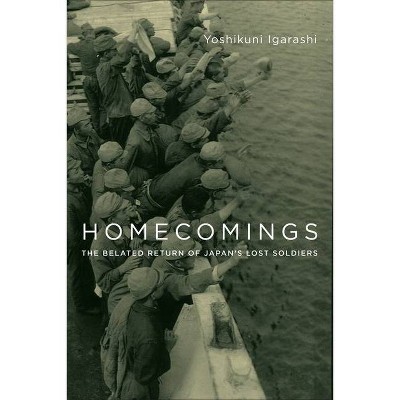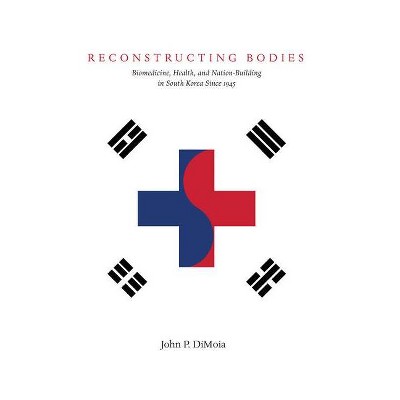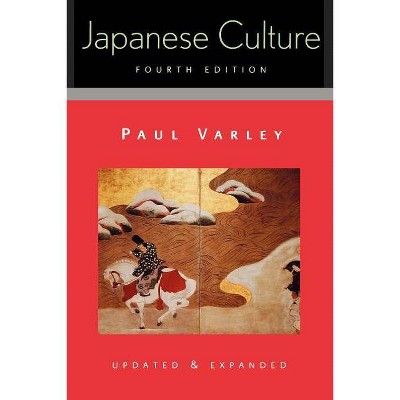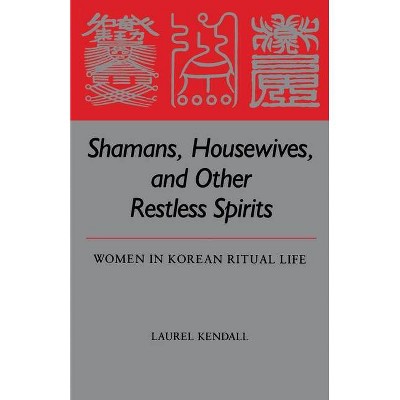A Buddhist Sensibility - (Studies of the Weatherhead East Asian Institute, Columbia Un) by Dominique Townsend (Paperback)
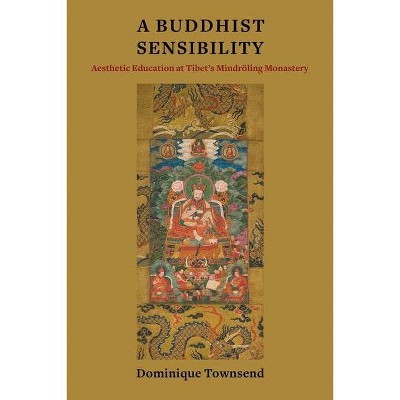
Similar Products
Products of same category from the store
AllProduct info
<p/><br></br><p><b> About the Book </b></p></br></br>Founded in 1676, Mindröling monastery became a key site for Buddhist education and a Tibetan civilizational center. Dominique Townsend investigates the ritual, artistic, and cultural practices inculcated at Mindröling to demonstrate how early modern Tibetans integrated Buddhist and worldly activities through training in aesthetics.<p/><br></br><p><b> Book Synopsis </b></p></br></br>Founded in 1676 during a cosmopolitan early modern period, Mindröling monastery became a key site for Buddhist education and a Tibetan civilizational center. Its founders sought to systematize and institutionalize a worldview rooted in Buddhist philosophy, engaging with contemporaries from across Tibetan Buddhist schools while crystallizing what it meant to be part of their own Nyingma school. At the monastery, ritual performance, meditation, renunciation, and training in the skills of a bureaucrat or member of the literati went hand in hand. Studying at Mindröling entailed training the senses and cultivating the objects of the senses through poetry, ritual music, monastic dance, visual arts, and incense production, as well as medicine and astrology. <p/>Dominique Townsend investigates the ritual, artistic, and cultural practices inculcated at Mindröling to demonstrate how early modern Tibetans integrated Buddhist and worldly activities through training in aesthetics. Considering laypeople as well as monastics and women as well as men, <i>A Buddhist Sensibility</i> sheds new light on the forms of knowledge valued in early modern Tibetan societies, especially among the ruling classes. Townsend traces how tastes, values, and sensibilities were cultivated and spread, showing what it meant for a person, lay or monastic, to be deemed well educated. Combining historical and literary analysis with fieldwork in Tibetan Buddhist communities, this book reveals how monastic institutions work as centers of cultural production beyond the boundaries of what is conventionally deemed Buddhist.<p/><br></br><p><b> Review Quotes </b></p></br></br><br>Dominique Townsend brings to her translations not only a careful reading of Classical Tibetan but also the insight and talents of a poet. She rightly situates Mindroling as the preeminent academy for scores of religious teachers and aristocratic officials, including the Great Fifth Dalai Lama, in seventeenth-century Tibet.--Pema Bhum, Director of The Latse Project<br><br><i>A Buddhist Sensibility</i> is a work of great and persuasive originality. Mindröling was not only a religious institution. It also offered what may be called a humanistic education, next to a religious one, and was remarkable for the place women occupied. Townsend has written a book that is at once scholarly and hugely readable. Her writing testifies to her fine control over the Tibetan sources she has used. This is an outstanding contribution not only to the field of Tibetan studies in general but also to anyone interested in the sociology of monastic life.--Leonard W. J. van der Kuijp, Harvard University<br><br>Dominique Townsend's masterful study presents, for the first time, an authoritative and sustained consideration of Buddhist aesthetics in early modern Tibet. <i>A Buddhist Sensibility</i> reveals how aesthetic concerns influenced new approaches to religious education, prompted new forms of cultural production, and supported the rise of new Buddhist institutions and their charismatic leaders. It likewise documents Mindröling Monastery's position as an exemplar of Buddhist excellence in the fields of philosophy, literature, art, ritual, and the highest aspirations of Tibetan literati culture.--Andrew Quintman, Wesleyan University<br><br>This book focuses upon a remarkable monastic institution in the early modern period and shows how it shaped the cosmopolitanism of the Tibetan capital and its aristocracy. Townsend provides fascinating case studies of letter-writing, monastic curricula, and <i>belles-lettres</i>, developing a special understanding of literature and aesthetics as ethically significant and religiously coded. The book serves to adjust our understanding of just what the category of "Buddhism," or even "Buddhist institution"--or even "monastery"--could and should denote, and troubles forever more any strict boundary between religion and secular life in Tibetan Buddhist society.--Janet Gyatso, author of <i>Being Human in a Buddhist World: An Intellectual History of Medicine in Early Modern Tibet</i><br><br>This brilliantly innovative exploration of Buddhist aesthetics at Mindröling monastery, one of the foremost centers of Tibetan intellectual and artistic production, is also the history of an extraordinary family and the remarkable institution they developed during a pivotal time in Tibetan history. Townsend's elegant work transforms our perspective on the relationship between materiality, renunciation, and social and political power.--Annabella Pitkin, Lehigh University<br><br>Townsend's focus on aesthetics illuminates intimate connections between the aristocratic circles surrounding the Dalai Lama's court and the visionary, ritual, and curricular innovations of Mindröling Monastery, transforming our understanding of the relationship between Buddhism and society far beyond Tibet.--Benjamin Bogin, author of <i>The Illuminated Life of the Great Yolmowa</i><br><br>What are the boundaries of the religious and the secular? And how does the realm of aesthetics become folded into the political? In this elegant study of Mindröling monastery, Townsend dislodges our immanent frame through a combination of historical rigor and literary acuity, providing a new model to understanding the pervasive place of institutions in the Tibetan Buddhist world.--Tsering Shakya, author of <i>The Dragon in the Land of Snows: A History of Modern Tibet Since 1947</i><br><br><i>A Buddhist Sensibility</i> breaks new ground in considering a prominent Tibetan monastery not only for its philosophical and contemplative expertise, or even its political significance, but also for its aesthetics and cosmopolitanism. Townsend's exploration of how these elements connected "court and cave," or in other words Buddhist and worldly authority (<i>lugs gnyis</i>), is both artful and compelling.--Sarah H. Jacoby, author of <i>Love and Liberation: Autobiographical Writings of the Tibetan Buddhist Visionary Sera Khandro</i><br><br>Townsend has achieved something rare, drawing on a wide array of genres and weaving them into a remarkably rich whole. Her translations are beautifully done, and her analyses demonstrate her expertise as a close reader, as she patiently dwells on key elements to bring her sources to life. The result is sure to inspire others in her field to take more seriously the role of aesthetics in Tibetan writing.--Jacob P. Dalton, Khyentse Foundation Distinguished University Professor in Tibetan Buddhism, University of California, Berkeley<br><p/><br></br><p><b> About the Author </b></p></br></br>Dominique Townsend is assistant professor of Buddhist studies at Bard College. She is also a poet and the author of <i>Shantideva: How to Wake Up a Hero</i> (2015), a book about Buddhism for children and families.
Price History
Cheapest price in the interval: 30.49 on November 8, 2021
Most expensive price in the interval: 30.49 on December 20, 2021
Price Archive shows prices from various stores, lets you see history and find the cheapest. There is no actual sale on the website. For all support, inquiry and suggestion messagescommunication@pricearchive.us
